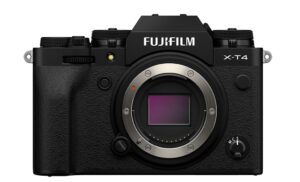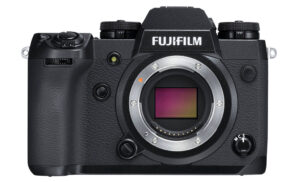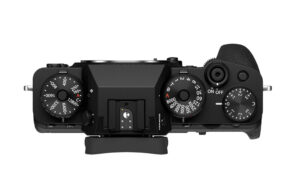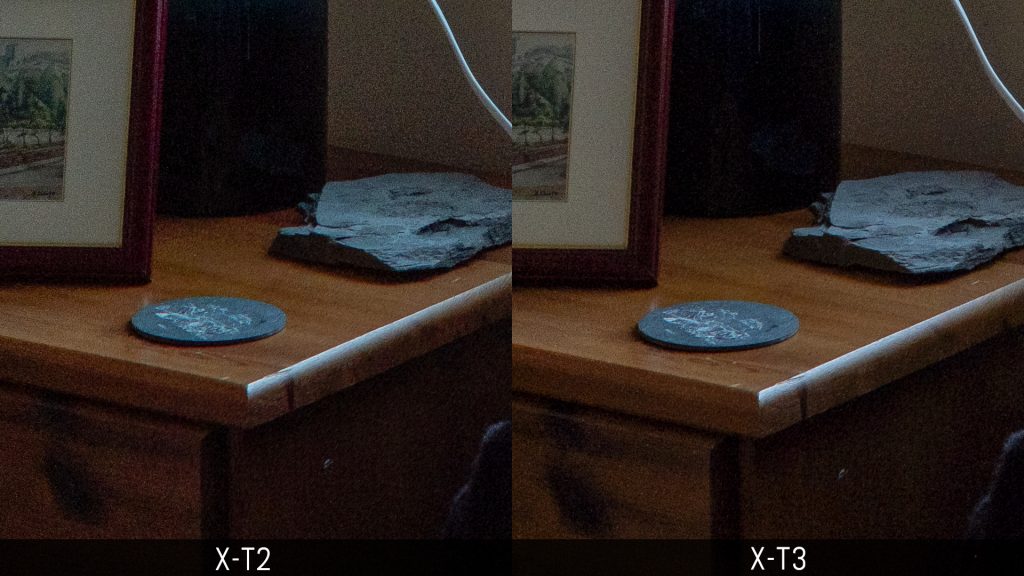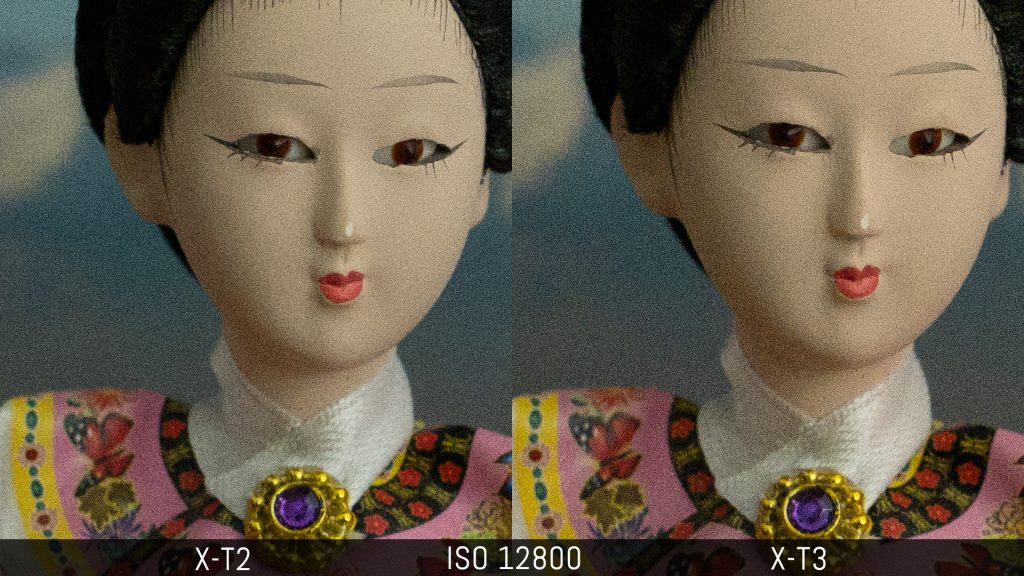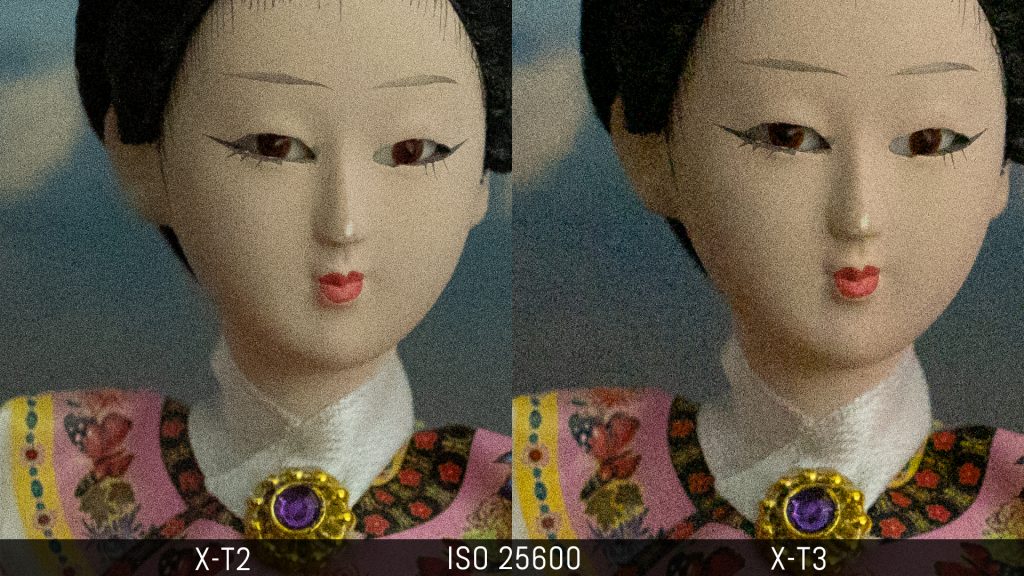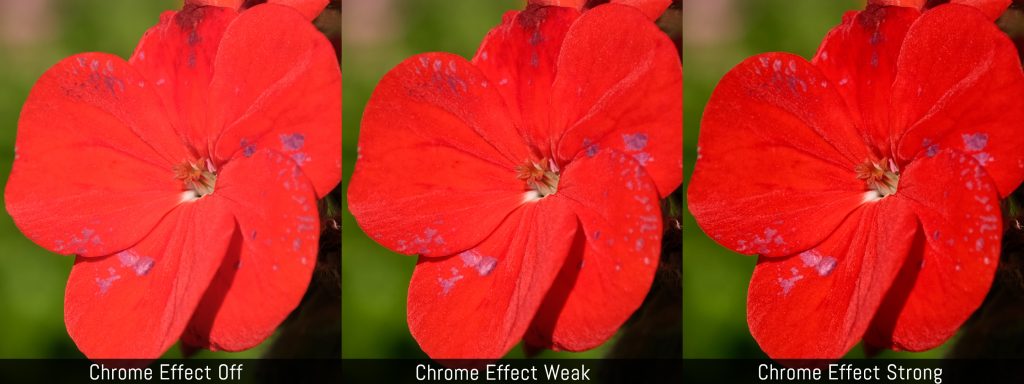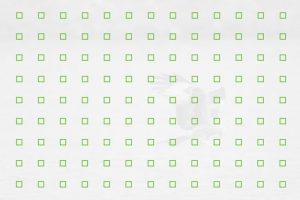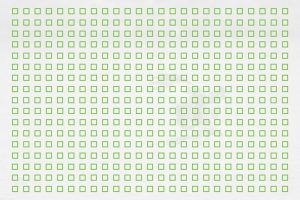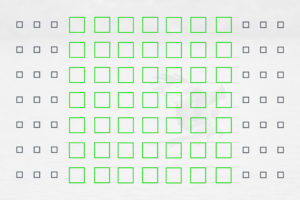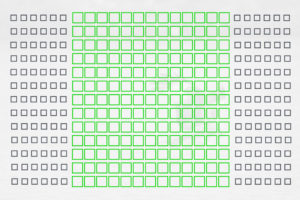The X-H1 made the news in early 2018 for being the first Fujifilm camera with 5-axis stabilisation, a feature that was long overdue in the X-series mirrorless line-up. After an initial struggle in sales, a price cut in 2019 gave it a second boost.
Now, IBIS has made its way onto a new camera, the X-T4. Up until now, no other Fujifilm camera except for the GFX100 medium format model has received this technology. Before the X-H1 disappears from the shelves forever, it is worth seeing how these two models compare.
What the X-T4 and X-H1 have in common:
- weather sealed build (splash, dust and temperatures down to -10˚C)
- viewfinder with 3.69M dots, 100fps and 0.75x magnification
- 1/8000s max. with the mechanical, 1/32000s with the electronic shutter
- 15 minute exposure with T mode
- Dual SD card slot with UHS-II compatibility (both slots)
- Bluetooth and WiFi connectivity
X-T4 comparison previews:
X-T3 vs X-T4 – X-T4 vs X-H1 – X-T4 vs X-Pro3 –
X-T4 vs A6600 – X-T4 vs A7 III
Ethics statement: this article is based on official information and our experience with the X-H1. We were not asked to write anything about these cameras, nor were we provided any compensation of any kind. Within the article, there are affiliate links. If you decided to buy something after clicking the link, we will receive a small commission. To know more about our ethics, you can visit our full disclosure page. Thank you!
1. Design
The X-T4 has gained some weight in order to accommodate the larger battery and the image stabilisation mechanism. That said, it remains smaller and lighter than the X-H1 as you can see below.
- X-T4: 134.6 x 92.8 x 63.8mm, 607g
- X-H1: 139.8 x 97.3 x 85.5mm, 673g
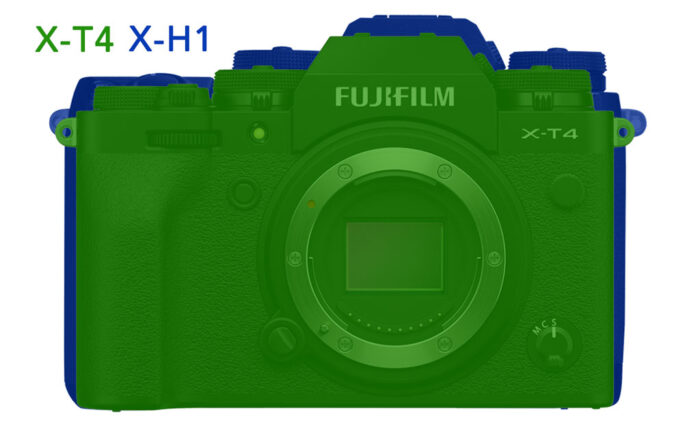

The X-H1 stands out for its larger front grip, which helps when using the camera with large lenses such as the XF 100-400mm. The X-T4 grip is larger than that of its predecessor, the X-T3, but I suspect that an optional landscape grip might still add extra comfort.
Another clear distinction is the top LCD panel on the X-H1, which shows the settings currently being used. The X-T4 doesn’t have this, leaving the space for the exposure compensation dial.
2. Battery
The X-T4 introduces a new battery, the NP-W235, which has almost double the power of the one that comes in the box with the X-H1 (2350mAh vs 1260mAh for the NP-W126S).
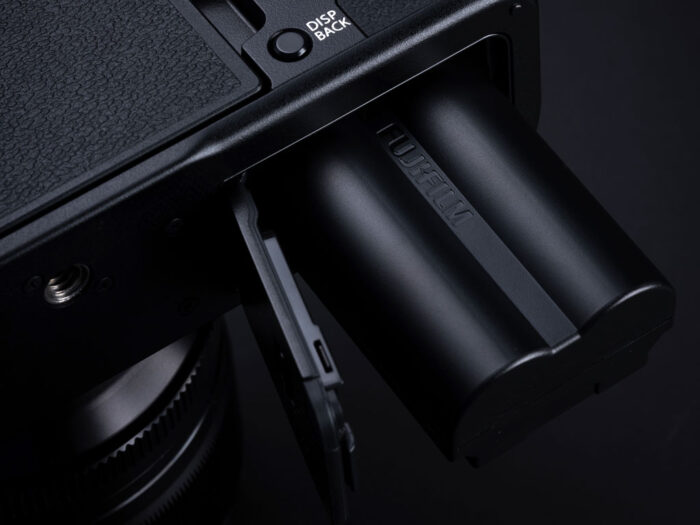
The X-T4 has a rating of 500 frames per charge, or 600 with the new Economy mode that is found alongside Standard and Boost. The X-H1 has a rating of 310 shots by comparison.
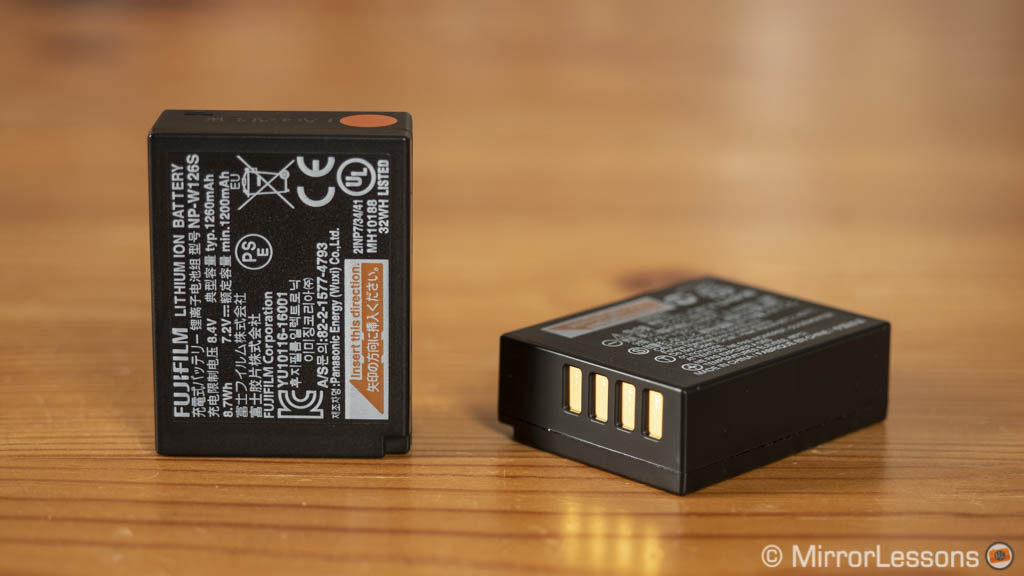
Another advantage of the X-T4 is that, thanks to the USB Type C port, it can take power delivery while in operation from a portable power bank, in addition to charging the battery when the camera is turned off. The X-H1 battery can be charged via USB 3 but not powered while on.
Both cameras have their own optional vertical battery grips.
3. LCD Screen
The X-T4 features a multi-angle monitor on the rear that can be flipped to the side and adjusted at various angle. You can also rotate it 180˚ if you’re V-Logging.
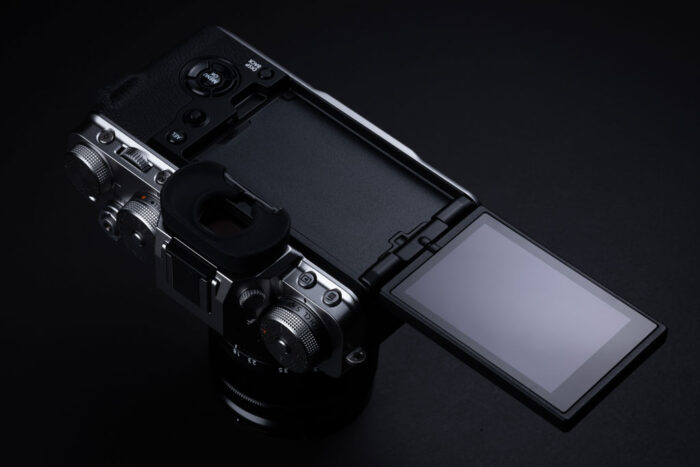
The screen of the X-H1 can be moved on 3 axes: up, down or to the side by about 70˚. The latter makes it comfortable to use when shooting in vertical format, but you don’t have a 180˚ option like on the X-T4.

Both screens are touch sensitive and allow you to control different settings just by tapping the screen. The X-T4 monitor has more resolution however (1.62 vs 1.04 million dots).
4. Sensor
The X-T4 features the same sensor found on the X-T3, X-Pro3 and X-T30. It is an APS-C size chip with a BSI structure (back-illumination) and the X-Trans IV pixel pattern. The ISO range goes from 160 to 12800, or 80 to 51200 if we consider the extended values.
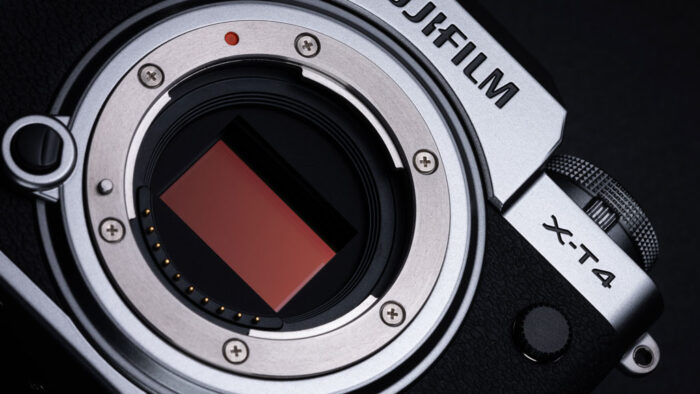
The X-H1 uses the previous X-Trans III generation sensor. The resolution is similar (24.3MP) and so is the ISO range: 200 to 12800, or 100 to 51200 ISO. It is the same found on the X-T2, X-Pro2 and X-T20.
The X-T4 sensor has a faster readout speed and can also benefit from a more powerful image engine (X-Processor 4, which is three times faster than the X-Processor Pro on the X-H1).
We compared these two sensors and processors in our X-T2 vs X-T3 comparison. We found that the 26MP sensor has slightly better dynamic range performance in the shadows, but displays a bit more noise at high ISOs. Either way, I wouldn’t worry about this when deciding between these two cameras.
5. Image Settings
Because the X-T4 is more recent, it includes new settings to control the image look and output. For example, it has two film simulation modes you won’t find on the X-H1: Classic Neg and Eterna Bleach Bypass.
Then we have more adjustments such as tone curve, clarity and highlights/shadows that can now be controlled in 1/2 steps.
Other things you’ll find on the X-T4 are the Colour Chrome Effects and Monochrome Adjustment.
Both cameras can shoot in uncompressed or lossless compressed RAW, but the X-T4 has a third option which is compressed. When using the built-in RAW converter, you can also save the images as 8-bit or 16-bit Tiff files.
6. Image Stabilisation Unit
The X-H1 was Fujifilm’s first camera with in-body stabilisation. The company justified the larger body by suggesting that it made room for the unit. The idea at the time was to launch a new series with a larger grip and more advanced video settings to differentiate it from the X-T series.
Unfortunately the sales didn’t really play in Fuji’s favour until the X-H1 saw a drastic reduction in price. By that time, the X-T3 was out with better video capabilities amongst other things. All it needed was 5-axis stabilisation, which has arrived with the X-T4.
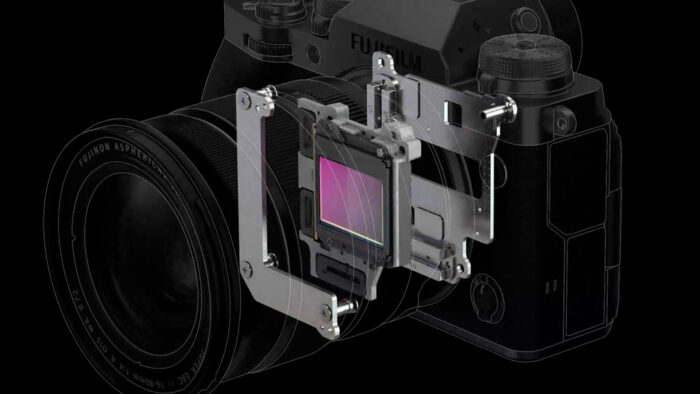
The new camera has a re-designed unit that is 30% smaller and 20% lighter than the one on the X-H1. It is a different mechanism, working with magnets rather than springs.
The compensation rating is higher on the X-T4: 6.5Ev if used with 18 out of 29 lenses currently in the catalogue. With the other lenses, it varies between 6 and 5.5 stops. The X-H1 oscillates between 5.5Ev and 5Ev depending on the lens used. You can have a better look at the ranking below, taken from Fujifilm’s official website.
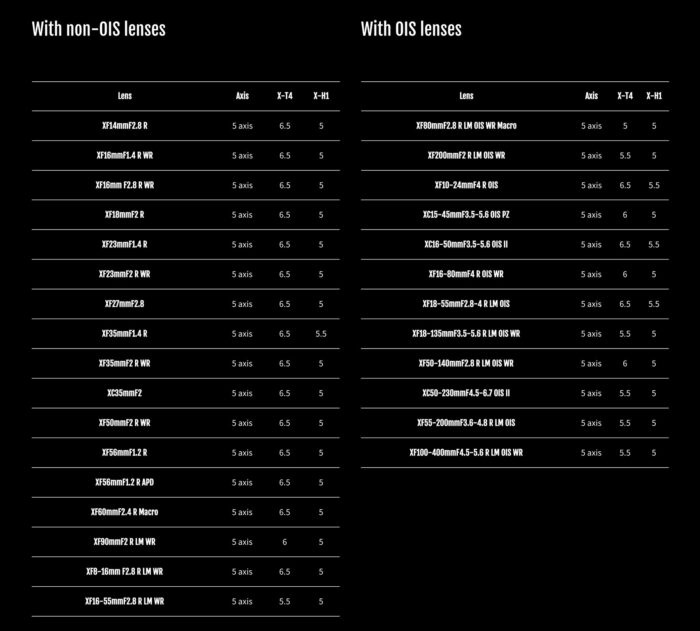
In our tests, the X-H1 proved to be capable for stills. While it didn’t reach the performance seen on Olympus cameras, I found it better than Sony’s A6500 and I would say even most A7 models. For video, it had some issues initially (when panning especially) but a few firmware updates improved the stability.
The X-T4 has an extra option for video and that is digital stabilisation. It crops the sensor by 1.1x but can improve the smoothness when walking or doing other movements. Of course we have yet to test the new camera and see how it performs, but if Fujifilm managed to improve the performance in comparison to the X-H1, it should prove very capable.
7. Continuous Shooting Speeds
The X-T4 features the fastest continuous shooting speeds seen on an APS-C camera. With the mechanical shutter, it can reach 15fps (with continuous AF) thanks to the new shutter mechanism. The X-H1 by comparison does 8fps. You can extend it to 11fps if you attach the optional VPB-XH1 grip.
Switch to the electronic shutter, and the X-T4 reaches 20fps, or 30fps if you’re willing to crop the sensor by 1.25x. What’s more, these speeds work with live view and no blackouts, so you see an uninterrupted live feed in the EVF or LCD screen. This is great when following difficult or unpredictable subjects such as birds. The X-H1 can do 14fps with the e-shutter but without the live view.

With the electronic shutter, the X-T4 can also activate a function called Pre-Burst, which pre-loads images in the buffer memory before you fully press the shutter button. This helps to capture unpredictable moments of action.
The X-T4 has a deeper buffer when shooting in continuous mode. If I compare the official rating at a speed they both have in common, 8fps, the X-T4 can do 200 Jpgs or 49 lossless compressed RAW files. The X-H1 does 80 and 31 respectively.
8. Autofocus
The X-T4 inherits all the latest technology Fujifilm has to offer when it comes to autofocus performance. It has 117 points distributed across almost the entire surface of the sensor (99%). These points become 425 with certain settings to offer more precision.
The X-H1 has 91 points that can become 325 with select settings, but it is important to point out that only the central points are phase detection (marked in green), whereas the ones on the side are contrast detection only.
Phase detection is faster and more accurate when dealing with fast subjects, which means that the X-T4 can keep up better even if you subject goes (monetarily) to the left or right side of your image.
The new camera has the latest software algorithm, which improves tracking (colours and shapes are analysed, not just distance), and face and eye detection. A person can be detected at a longer distance and accuracy has been improved.
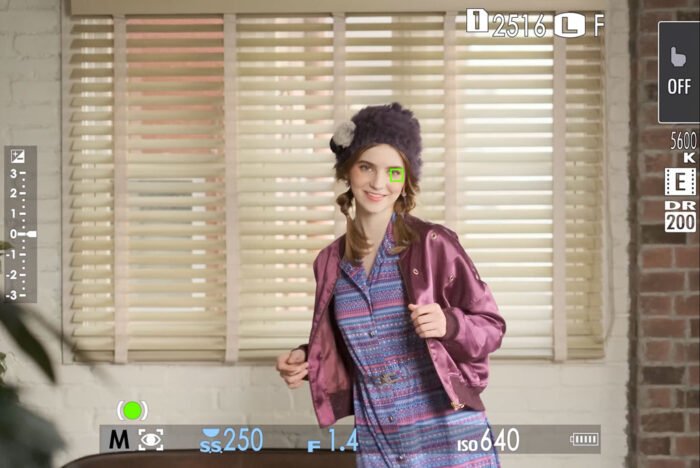
Finally, the X-T4 has more sensitivity in low light (-6Ev vs -1Ev on the X-H1).
It is safe to assume that the X-T4 will give you better performance overall. It is based on the X-T3 autofocus, but with an improved software. We already found the X-T3 better than the X-H1 (especially concerning face and eye detection), and I’m curious to see how the new tracking algorithm will increase the performance on the new camera.
9. Video
The X-T4 is a beast in terms of video specifications. Frame rates, bit-depth and bitrate, everything is set at a higher standard in comparison to the X-H1. Here is exactly how they compare.
| X-T4 | X-H1 | |
|---|---|---|
| 4K / DCI | up to 60p | up to 30p |
| Bitrate | up to 400Mbps (30p max.) | up to 200Mbps |
| Bit-depth (internal) | 10-bit 4:2:0 | 8-bit 4:2:0 |
| Bit-depth (HDMI) | 10-bit 4:2:2 | 8-bit 4:2:2 |
| Log / HDR | F-Log / HLG | F-Log only |
| Slow Motion (1080p) | 240fps (x10) | 120fps (x5) |
| Max. recording | 20min in 4K 50/60p 30min in 4K 24 to 30p 30min in 1080p | 15min in 4K 24 to 30p 20min in 1080p 30min with VG-XH1 |
The 10-bit internal/external option the X-T4 allows you to capture 64 times more colour depth than the 8-bit option on the X-H1. What’s more, the X-T4 offers an All-Intra compression which is less CPU heavy when editing the files on the computer. Note however that internal 10-bit is recorded with the H.265 codec, which is not digested well by all editing softwares.
In terms of field of view, the X-T4 doesn’t crop the sensor when recording 4K up to 30p, but applies a 1.18x crop if you select 50p or 60p. The X-H1 crops by 1.17x in 4K.
When using the High Speed mode to produce slow motion footage in Full HD, not only does the X-T4 have twice the speed (240 vs 120fps) but it also offers better quality, albeit at the cost of a 1.29x crop.
One of the problems with these cameras when switching often between stills and video is that you cannot separate the exposure due to the main dials and/or aperture ring of the lenses. One workaround is the Movie Silent Control option that lets you select everything with the touch screen and keep these settings separate from the still mode.
On the X-T4, you can also use the command dials to control the exposure while working in video mode. Furthermore, there is a handy switch on top to switch between photos and movies.
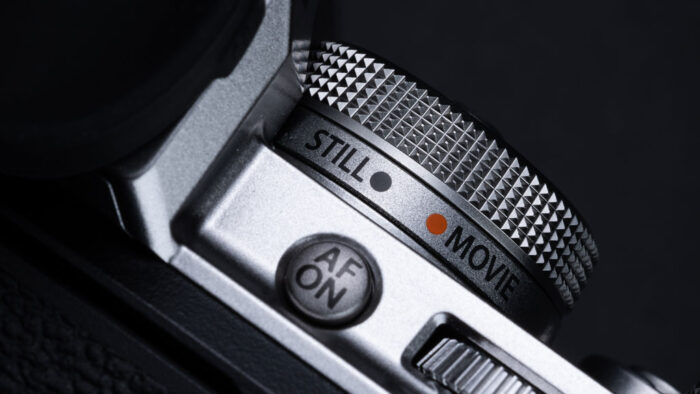
Other bits and bobs have been added to the X-T4 like a separate menu for video and a view assist when recording with F-Log, which allows you to display the normal contrast and saturation. The new camera can also record video on both SD cards at the same time (the second slot acts as a back-up).
Finally, the X-H1 has a mic input and headphone output. The X-T4 has audio in for a microphone or a line input, but to get the audio out, you need to use the USB adapter, which is included in the box thankfully.
10. Price
The X-T4 is being launched with a retail price of $1700, £1550 or €1830 (body only).
When released, the X-H1 initially cost $2000, which is probably the main reason it didn’t sell well. These days however, you can find it for about $1300 with the battery grip, £850 or €900 (body only). Note that the X-H1 is starting to be marked as discontinued.
Conclusion
X-T4 comparison previews:
X-T3 vs X-T4 – X-T4 vs X-H1 – X-T4 vs X-Pro3 –
X-T4 vs A6600 – X-T4 vs A7 III
The X-T4 has every appearance of being the most complete Fujifilm camera ever released, and we could also argue that it is potentially the best APS-C camera on the market at the moment. It may look like an upgrade that targets video more than still users, but the truth is that it packs specifications for everybody. And now that we also have in-body stabilisation, there is little left to be desired.
The X-H1 is a camera that has undertaken a strange path. It always felt to me like a miscalculation, and now I can’t help but wonder what the future of the H series holds. An X-H2 with the same technology as the X-T4 but a larger grip just wouldn’t make sense. At this point, the only option is to introduce a new sensor to differentiate this range in terms of image quality.
Fujirumors says that an X-H2 is coming, but not in 2020. So we’ll have to be patient for now. In the meantime, the X-H1 is starting to being marked as discontinued in certain stores. It looks like time is running out. If you find it at a bargain price, there is no doubt that it is a very capable camera, and more than enough for most people’s needs.
But if you’re after the best specifications, then the X-T4 is the answer.
Reminder: the links below are affiliate links. If you decided to buy something after clicking the link, we will receive a small commission.
Check price of the Fujifilm X-T4 on
B&H Photo
Check price of the Fujifilm X-H1 on
Amazon | Amazon UK | eBay
Used Fujifilm gear on
MPB US | MPB UK

